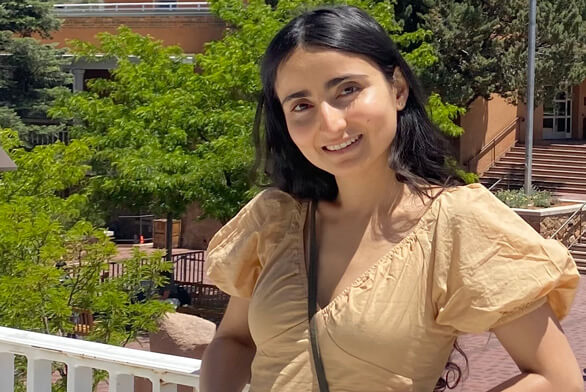Internships Connect the Lab to Life
August 22, 2022 | By Frank O’Mahony

Every summer, St. John’s students fan out across the globe to gain valuable onsite work experience through the Hodson Internships, which are based in Annapolis, and the Ariel Internships, based in Santa Fe.
Students who are interested in these summer opportunities work with the Career Services Office in Annapolis or the Office of Personal and Professional Development (OPPD) in Santa Fe to identify locations and programs that align with their goals—or tap into budding interests.
The right match can give students a deeper understanding of their post-graduate choices and provide an edge as they seek employment.
The experience can also foster deeper relationships between students, alumni, and the college. When Susmi Sharma (SF21) was awarded an internship during her senior year, she sought to explore her growing interest in neuroscience and psychology. Piér Quintana, assistant director at OPPD, introduced Sharma to Dr. Taffeta Elliott (SF97), assistant professor of psychology and education at the New Mexico Institute of Mining and Technology, known locally as New Mexico Tech.
Elliott was interested in hosting a student intern in her lab and, as an alum, was familiar with the advantages that St. John’s students can bring to experimental research.
“Susmi had a great can-do approach to lab work that might have been tedious to students who have less insight about their own motivations or the value of using empirical study to test strong claims,” says Elliott. “She also had an advantage in that she understood clearly how her senior essay work on Nietzsche was related to psychological research on self-perception and metacognition.”
Sharma’s internship with Dr. Elliott involved two distinct research projects that took her into the seemingly disparate—but perhaps not too dissimilar—brains of South African clawed frogs and college students.
The first study looked at how frogs use an assortment of hormones, nonverbal cues, and vocal communication to mediate their behavior and their social decisions. The other study explored the learning strategies that are most effective for college students who are pursuing majors in science, technology, engineering, and mathematics (STEM).
“The questions we were persistently asking were ‘why do most of us spend hours using ineffective learning strategies like highlighting or rereading text?’” explains Sharma. The assistance she provided during her internship will help researchers to understand why students continue to rely on unproductive strategies and how educators can promote more effective ones.
Sharma now works full time as a research assistant at the University of Minnesota’s Department of Neuroscience, where she continues to nurture her interest in the neural underpinnings of human behavior.
“My initial fascination with neuroscience deepened after my hands-on internship,” says Sharma. “Before I interned with Dr. Elliott, I was questioning my decision to some extent: I did not know how or even if I could really help people by doing experiments and computational work.”
“The internship opened my eyes, made me see that the task of a researcher is to understand the problem and then connect the experiments to real people’s lives.”
Alumni who are in a position to host a summer intern are encouraged to find out how a current student can enrich the workplace—and how hosting a student can enrich their own relationship to the college.
“Mentoring Johnnies keeps me connected to St. John’s,” says Elliott. “Susmi brought energy to our summer projects, and she brought great conversations.”

